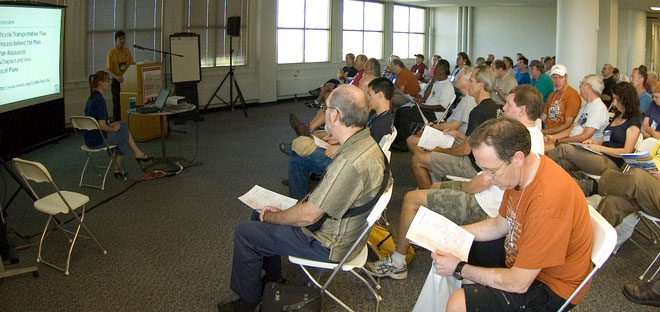MAKE A DIFFERENCE
In The Community
When communities protect nature, it helps secure a strong future

Five Rivers MetroParks protects nearly 16,000 acres of open space in the Miami Valley. With community cooperation, we can extend that reach to protect larger areas of land by encouraging local stewardship and integrating social and environmental priorities.
Create Green Schoolyards
Five Rivers MetroParks supports efforts to get children outside and moving. We are part of a national initiative to help establish green school grounds and connect students to nature, weaving the ideas of urban sustainability and ecological design with academic achievement, public health, children’s well-being, sense of place and community engagement.
Green schoolyards bring nature back to cities and suburbs by transforming barren asphalt and ordinary grass into vibrant environments for learning and play, set within the context of the rich, local ecosystems that nurture wildlife and the natural processes that underlie and sustain our urban infrastructure.
Establish a community garden
Urban communities can use patches of vacant land to host community gardens and can invite participants to help plant, harvest and enjoy the produce. In turn, they can incorporate into their diets the fruits, vegetables, vitamins and nutrients they need to stay healthy. Community gardens have functions that provide a number of permanent benefits to individuals, families and communities. Those functions include, but are not limited to, the following:
- Filtering rainwater, helping to keep lakes, rivers and groundwater clean.
- Restoring oxygen to the air and helping to reduce air pollution.
- Recycling huge volumes of tree trimmings, leaves, grass clippings and other organic waste and putting them back into the soil.
- Adding beauty to the community and heightening people’s awareness of and appreciation for living things.
- Teaching children where food comes from, building the potential for a future generation of gardeners and land stewards.
Buy local
The community benefits when we all make more local purchases. Buying local
- Reduces the use of fossil-fuels for transportation. By buying local, you can conserve the majority of energy used in shipping.
- Keeps money in our local economy. Local growers and producers who sell directly to consumers cut out the middlemen and get full retail price for their products. They keep the taxes they pay local, too.
- Preserves genetic diversity. Local farmers grow a huge number of varieties to provide a long season of harvest, an array of eye-catching colors and the best flavors. Many varieties are heirlooms, passed down from generation to generation because they taste good. These old varieties contain genetic material from hundreds or even thousands of years of human selection; they may someday provide the genes needed to create varieties that will thrive in a changing climate.
- Preserves open space. As the demand for local fruits and vegetables increases, selling farmland for development becomes less likely. That landscape will survive only as long as farms are financially viable. When you buy locally grown food, you are doing something proactive to preserve the agricultural landscape.
- It’s about sustainability. By supporting local businesses today, you can help ensure that there will be businesses in your community tomorrow. When you make this choice, you cannot help but raise the consciousness of your friends and family.
Advocate for bike- and pedestrian-friendly streets
Did you know most regular daily trips are three miles long or shorter? That means better biking and walking infrastructure creates opportunities to be physically active as part of your daily routine and can help create healthier communities and environments by cutting back on harmful emissions that cause climate change and other pollution.
Local organizations are working to make our communities in the Dayton region more bike- and pedestrian-friendly. Join one of these groups to offer your support or start one of your own:
Support community-based conservation initiatives
Community conservation returns demonstrable value to residents and visitors, by protecting iconic landmarks and landscapes that will ultimately be accessible to all. The following initiatives are working to support community-based conservation — join them to make the Dayton region a conservation leader:


